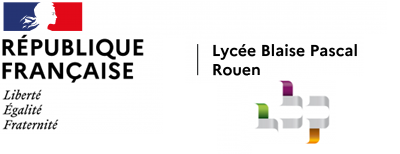How does the bridge to join Ásgard form?
The Rainbow
(Pour expliquer la problématique: In Norse mythology, the rainbow named Bifröst is the "bridge" which provides access to Asgard, the realm of the gods, guarded by the god Heimdall. Men were always fascinated by the rainbow, it is found in many other mythologies [example: • In Greek mythology, the path between heaven and earth was created by the messenger of the Olympian gods, Iris. She used it to bring messages from the gods to mortals. • For the ancient Irish, the secret the hiding pot of gold of the Irish leprechaun was where the end of the rainbow sky is. The leprechaun won his gold by making fairies’ shoes and keeps it in a pot that he hides preciously. The rainbow shows humans where the leprechaun’s pots are, however it is very rare to be able to catch, the leprechauns are very clever. • It also evokes Buddha’s enlightenment, who descends from the sky by this staircase of 7 colors, the ramps are 2 snakes ...)
• A rainbow is an optical and meteorological phenomenon that makes visible the spectrum of light from the sky when the sun shines when it rains. Although a rainbow covers a spectrum of continuous colors, we can distinguish several significant colors red, orange, yellow, green, blue and purple.
How does it form?
• The light emitted by the sun is "white", that is to say it consists of a kind of mixture of light waves of different wavelengths like red (which corresponds to a wavelength of 620-780 nm), orange (592-620 nm), yellow (578-592 nm), green (500-578 nm), blue (446-500 nm) and violet (380-446 nm). If this white light is decomposed into its constituents, the spectrum of visible light is obtained. (This decomposition occurs during the phenomenon of diffraction.)
• But when it rains, each drop of water produces diffraction: it reflects the white sunlight into its various components deviating at different angles. Thus appear seven colors
• The rainbow is caused by the scattering of sunlight by approximately spherical drops of rain. Light is first refracted by penetrating the surface of the drop, then subjected to a partial reflection on the rear of the drop and is refracted again when it comes out. The overall effect is that the incoming light is mainly refracted rearwardly at an angle of approximately 40-42 °, regardless of the size of the drop. The precise value of the angle of refraction depends on the wavelength of the components of light (for example: 40 ° in the case of purple).In the case of entry in a more refracting environment, the refractive angle of the blue light is lower than that of red light. Thus, after reflection on the water-air interface, the blue light emerges from a drop above the red light (the blue light is reflected at an angle of 40.5 ° with respect to the sun’s rays, and the red light at an angle of 42.4 °).
• And it is the reason why, if you want to see a rainbow you must wait until the sun is located below 42 °, because this is the only opportunity for you to see it. It is most unlikely to observe one at noon, because the sun is higher than 42 ° so the colors cannot be seen from the ground. Conversely, the lower the sun is on the horizon, the higher the rainbow is. But you will never see a full semicircle, unless you are in the mountains or in an airplane. In the latter case, you can even see the whole circle.
• Furthermore, according to the drops size, the rainbow is more or less colored. Indeed, very fine droplets scatter incident light badly, therefore the rainbow will be very pale.
• Because the observer is fixed and turns his back to the sun, he sees light from water droplets with different angles relative to the sunlight. Therefore a rainbow doesn’t actually exist physically but is an optical illusion whose apparent position depends on the position of the observer and the sun, the center of the rainbow is exactly in the opposite direction to Sun’s relative to the observer. All raindrops refract and reflect the sunlight in the same way, but only the light from a small part of raindrops reaches the eye of the observer.
• It is the image formed by the light of these raindrops that we see as rainbow.
Some possible questions:
Why do we see rainbows so frequently in summer and almost ever in winter?
To observe a rainbow, there must be sun and rain. In winter, the droplets of water freeze to form ice particles which do not produce rainbows.
Why rainbows are so rarely observed at noon?
Don’t forget that the center of the rainbow is opposite to the Sun. At noon, the sun being very high in the sky, the rainbow is thus far below the observer.
Do two people see the same rainbow?
Humphreys, a famous researcher, indicates that «because a rainbow is a special distribution of the color (produced in a particular way) with respect to a well defined point - the eye of observer - and because a single distribution cannot be observed by two different points, it follows that two observers do not see, and cannot see, the same rainbow. » In fact, each eye sees a different rainbow!
